Schiaparelli did not adapt to the changes in fashion following World War II and her business closed in 1954.
Schiaparelli was born at the Palazzo Corsini in Rome. Her mother was a Neopolitan aristocrat and her father a renowned scholar and curator of medieval manuscripts. Her father, Celestino, was Dean of the University of Rome and an authority on Sanskrit. She was a niece of astronomer Giovanni Schiaparelli, who discovered the canali of Mars, and she spent hours with him studying the heavens. She studied philosophy at the University of Rome, during which she published a book of sensual poems that shocked her conservative family. Schiaparelli was sent to a convent until she went on hunger strike and at the age of 22 accepted a job in London as a nanny. Elsa led a refined life with a certain amount of luxury provided by her parents’ wealth and high social status. She believed, however, that this luxury was stifling to her art and creativity and so she removed herself from the “lap of luxury” as quickly as possible. Schiaparelli moved first to New York City and then to Paris, combining her love of art and design to become a surrealist couturier.
Schiaparelli was later introduced to Gaby Picabia, ex-wife of French Dadaist artist Francis Picabia and owner of a boutique selling French fashions in New York. Through her work there, Schiaparelli met artists like Marcel Duchamp and Man Ray. When Gaby and Man Ray left for Paris, Schiaparelli joined them.




In Paris, Schiaparelli - known as "Schiap" to her friends - began making her own clothes. With some encouragement from Paul Poiret, she started her own business but it closed in 1926 despite favourable reviews. She launched a new collection of knitwear in early 1927 using a special double layered stitch created by Armenian refugees and featuring sweaters with surrealist trompe l'oeil images. Although her first designs appeared in Vogue, the business really took off with a pattern that gave the impression of a scarf wrapped around the wearer's neck. The "pour le Sport" collection expanded the following year to include bathing suits, skiwear and linen dresses. The divided skirt, a forerunner of shorts, shocked the tennis world when worn by Lili de Alvarez at theWimbledon Championships in 1931. She added evening wear to the collection in 1931, and the business went from strength to strength, culminating in a move from Rue de la Paix to the Schiap Shop in the Place Vendôme.
A darker tone was set when France declared war on Germany in 1939. Schiaparelli's Spring 1940 collection featured "trench" brown and camouflage print taffetas. Soon after the fall of Paris on 14 June 1940, Schiaparelli sailed to New York for a lecture tour; apart from a few months in Paris in early 1941, she remained in New York City until the end of the war. On her return she found that fashions had changed, with Christian Dior's "New Look" marking a rejection of pre-war fashion. The house of Schiaparelli struggled in the austerity of the post-war period, and Elsa finally closed it down in December 1954, the same year that her great rival Chanel returned to the business. Aged 64, she wrote her autobiography and then lived out a comfortable retirement between her apartment in Paris and house in Tunisia. She died on 13 November 1973.
 Schiaparelli was an innovative woman and fashion designer. She had a lot of "firsts" in the fashion industry. Her career began with her introduction of graphic knitwear to the world of fashion with knit patterns and emblems. These led to her fanciful prints of body parts, food, and many more unusual themes. She was the first to use brightly colored zippers, appearing first on her sportswear in 1930 and again five years later on her evening dresses. Not only was she the first to use brightly colored zippers, but she was also the first to have them dyed to match the material used in her garments. She was the first to create and use fanciful buttons that looked more like brooches. They came in the shapes of peanuts, bees, and even ram’s heads. In Parisian fashion, she invented culottes, introduced Arab breeches, embroidered shirts, wrapped turbans, pompom-rimmed hats, barbaric belts, the “wedge,” a soled shoe that would trend through the 20th century and into the next, and mix-and-match sportswear, the concept of which would not be fully recognized for another forty to fifty years. While her innovations in fashion design were numerous, it was her creation of the runway show as we know it today that was most influential. Her modern idea of a fashion show included a runway with music and art, and the use of elongated, shapeless women as models. She believed that this boyish figure would best display the clothing. Many people do not realize the true sum of her impact on fashion and the fashion industry.
Schiaparelli was an innovative woman and fashion designer. She had a lot of "firsts" in the fashion industry. Her career began with her introduction of graphic knitwear to the world of fashion with knit patterns and emblems. These led to her fanciful prints of body parts, food, and many more unusual themes. She was the first to use brightly colored zippers, appearing first on her sportswear in 1930 and again five years later on her evening dresses. Not only was she the first to use brightly colored zippers, but she was also the first to have them dyed to match the material used in her garments. She was the first to create and use fanciful buttons that looked more like brooches. They came in the shapes of peanuts, bees, and even ram’s heads. In Parisian fashion, she invented culottes, introduced Arab breeches, embroidered shirts, wrapped turbans, pompom-rimmed hats, barbaric belts, the “wedge,” a soled shoe that would trend through the 20th century and into the next, and mix-and-match sportswear, the concept of which would not be fully recognized for another forty to fifty years. While her innovations in fashion design were numerous, it was her creation of the runway show as we know it today that was most influential. Her modern idea of a fashion show included a runway with music and art, and the use of elongated, shapeless women as models. She believed that this boyish figure would best display the clothing. Many people do not realize the true sum of her impact on fashion and the fashion industry.
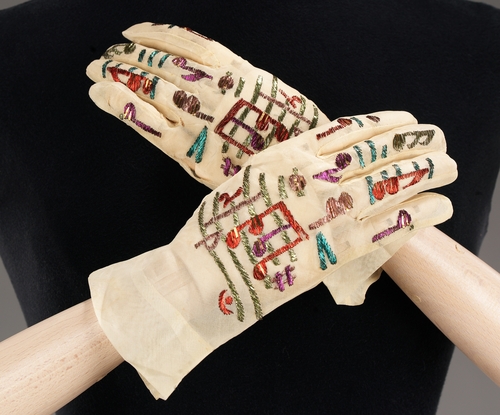
Artist Collaborations
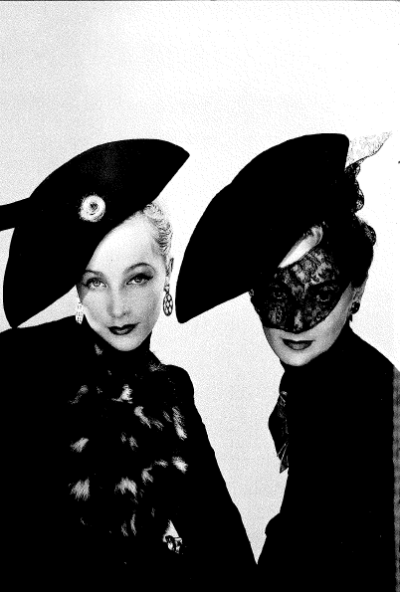 Modern art, particularly Dada and Surrealism, provided a significant source of inspiration for Schiaparelli. She worked with a number of contemporary artists to develop her imaginative designs, most famously with Salvador Dalí. From these artistic collaborations, Schiaparelli’s most notable designs were born. In addition to well-documented collaborations such as the shoe hat and the Tears dress, Dali's influence has been identified in designs such as the lamb-cutlet hat and a 1936 day suit with pockets simulating a chest of drawers. Schiaparelli also had a good relationship with other artists including Leonor Fini, Jean Cocteau, Meret Oppenheim, and Alberto Giacometti. Chanel referred to her as 'that Italian artist who makes clothes'.
Modern art, particularly Dada and Surrealism, provided a significant source of inspiration for Schiaparelli. She worked with a number of contemporary artists to develop her imaginative designs, most famously with Salvador Dalí. From these artistic collaborations, Schiaparelli’s most notable designs were born. In addition to well-documented collaborations such as the shoe hat and the Tears dress, Dali's influence has been identified in designs such as the lamb-cutlet hat and a 1936 day suit with pockets simulating a chest of drawers. Schiaparelli also had a good relationship with other artists including Leonor Fini, Jean Cocteau, Meret Oppenheim, and Alberto Giacometti. Chanel referred to her as 'that Italian artist who makes clothes'.






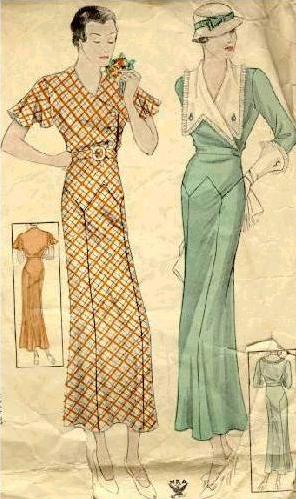

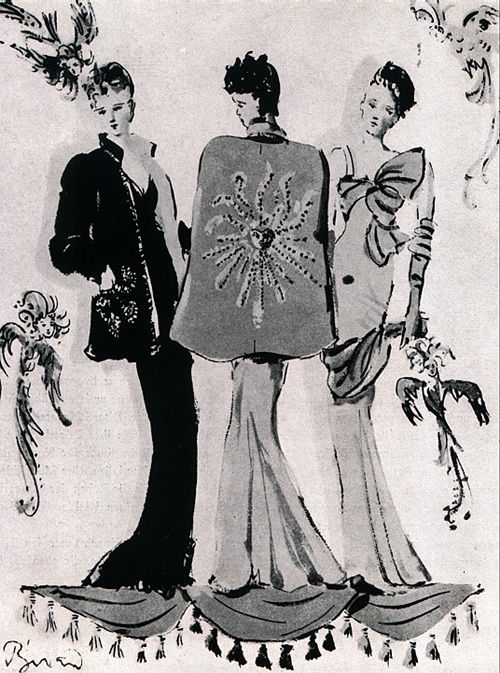




Cocteau
In 1937, Schiaparelli collaborated with the artist Jean Cocteau to design a jacket and an evening coat for that year's Autumn collection. The jacket was embroidered with a female figure with one hand caressing the waist of the wearer, and long blonde hair cascading down one sleeve. The coat featured two profiles facing each other, creating the optical illusion of a vase of roses. The embroidering of both garments was executed by the couture embroidery house of Lesage.


Dali
The designs Schiaparelli produced in collaboration with Dali are among her best known. While Schiaparelli did not name her designs, the four iconic Dali collaborations are popularly known as follows:
Lobster Dress
 The 1937 Lobster Dress was a simple white silk evening dress with a crimson waistband featuring a large lobster painted (by Dali) onto the skirt. From 1934, Dali had started incorporating lobsters into his work, including New York Dream-Man Finds Lobster in Place of Phone shown in the magazine American Weekly in 1935, and the mixed-media Lobster Telephone (1936). His design for Schiaparelli was interpreted into a fabric print by the leading silk designer Sache. It was famously worn by Wallis Simpson in a series of photographs by Cecil Beaton taken at the Château de Candé shortly before her marriage to Edward VIII.
The 1937 Lobster Dress was a simple white silk evening dress with a crimson waistband featuring a large lobster painted (by Dali) onto the skirt. From 1934, Dali had started incorporating lobsters into his work, including New York Dream-Man Finds Lobster in Place of Phone shown in the magazine American Weekly in 1935, and the mixed-media Lobster Telephone (1936). His design for Schiaparelli was interpreted into a fabric print by the leading silk designer Sache. It was famously worn by Wallis Simpson in a series of photographs by Cecil Beaton taken at the Château de Candé shortly before her marriage to Edward VIII.
Tears Dress
 The Tears Dress, a slender pale blue evening gown printed with a Dali design of trompe l'oeil rips and tears, worn with a thigh-length veil with "real" tears carefully cut out and lined in pink and magenta, was part of the February 1938 Circus Collection. The print was intended to give the illusion of torn animal flesh, the tears printed to represent fur on the reverse of the fabric and suggest that the dress was made of animal pelts turned inside out. Figures in ripped, skin-tight clothing suggesting flayed flesh appeared in three of Dali's 1936 paintings, one of which, Necrophiliac Springtime, was owned by Schiaparelli; the other two are The Dream Places A Hand on a Man's Shoulder and Three Young Surrealist Women Holding in Their Arms the Skins of an Orchestra.
The Tears Dress, a slender pale blue evening gown printed with a Dali design of trompe l'oeil rips and tears, worn with a thigh-length veil with "real" tears carefully cut out and lined in pink and magenta, was part of the February 1938 Circus Collection. The print was intended to give the illusion of torn animal flesh, the tears printed to represent fur on the reverse of the fabric and suggest that the dress was made of animal pelts turned inside out. Figures in ripped, skin-tight clothing suggesting flayed flesh appeared in three of Dali's 1936 paintings, one of which, Necrophiliac Springtime, was owned by Schiaparelli; the other two are The Dream Places A Hand on a Man's Shoulder and Three Young Surrealist Women Holding in Their Arms the Skins of an Orchestra.
Skeleton Dress
 Dali also helped Schiaparelli design the Skeleton Dress for the Circus Collection. It was a stark black crepe dress which used trapunto quilting to create padded ribs, spine, and leg bones.
Dali also helped Schiaparelli design the Skeleton Dress for the Circus Collection. It was a stark black crepe dress which used trapunto quilting to create padded ribs, spine, and leg bones.Shoe Hat

In 1933, Dali was photographed by his wife Gala Dali with one of her slippers balanced on his head. In 1937 he sketched designs for a shoe hat for Schiaparelli, which she featured in her Fall-Winter 1937-38 collection. The hat, shaped like a woman's high heeled shoe, had the heel standing straight up and the toe tilted over the wearer's forehead. This hat was worn by Gala Dali, Schiaparelli herself, and by the Franco-American editor of the French Harper's Bazaar, heiress Daisy Fellowes, who was one of Schiaparelli's best clients.
 Schiaparelli designed the wardrobe for several films, starting with the French version of 1933's Topaze and ending with Zsa Zsa Gabor's outfits for the 1952 production of Moulin Rouge. She famously dressed Mae West for Every Day's a Holiday (1937) using a mannequin based on West's measurements, which inspired the torso bottle for Shocking perfume.
Schiaparelli designed the wardrobe for several films, starting with the French version of 1933's Topaze and ending with Zsa Zsa Gabor's outfits for the 1952 production of Moulin Rouge. She famously dressed Mae West for Every Day's a Holiday (1937) using a mannequin based on West's measurements, which inspired the torso bottle for Shocking perfume. The failure of her business meant that Schiaparelli's name is not as well remembered as that of her great rival Chanel. But in 1934, Time placed Chanel in the second division of fashion, whereas Schiaparelli was one of "a handful of houses now at or near the peak of their power as arbiters of the ultra-modern haute couture....Madder and more original than most of her contemporaries, Mme Schiaparelli is the one to whom the word "genius" is applied most often". At the same time Time recognised that Chanel had assembled a fortune of some US$15m despite being "not at present the most dominant influence in fashion", whereas Schiaparelli relied on inspiration rather than craftsmanship and "it was not long before every little dress factory in Manhattan had copied them and from New York's 3rd Avenue to San Francisco's Howard Street millions of shop girls who had never heard of Schiaparelli were proudly wearing her models".
The failure of her business meant that Schiaparelli's name is not as well remembered as that of her great rival Chanel. But in 1934, Time placed Chanel in the second division of fashion, whereas Schiaparelli was one of "a handful of houses now at or near the peak of their power as arbiters of the ultra-modern haute couture....Madder and more original than most of her contemporaries, Mme Schiaparelli is the one to whom the word "genius" is applied most often". At the same time Time recognised that Chanel had assembled a fortune of some US$15m despite being "not at present the most dominant influence in fashion", whereas Schiaparelli relied on inspiration rather than craftsmanship and "it was not long before every little dress factory in Manhattan had copied them and from New York's 3rd Avenue to San Francisco's Howard Street millions of shop girls who had never heard of Schiaparelli were proudly wearing her models".Perhaps Schiaparelli's most important legacy was in bringing to fashion the playfulness and sense of "anything goes" of the Dada and Surrealist movements. She loved to play with juxtapositions of colours, shapes and textures, and embraced the new technologies and materials of the time. With Charles Colcombet she experimented with acrylic, cellophane, a rayon jersey called "Jersela" and a rayon with metal threads called "Fildifer" - the first time synthetic materials were used in couture. Some of these innovations were not pursued further, like her 1934 "glass" cape made from Rhodophane, a transparent plastic related to cellophane. But there were more lasting innovations; Schiaparelli created wraparound dresses decades before Diane von Furstenberg and crumpled up rayon 50 years before Issey Miyake's pleats and crinkles. In 1930 alone she created the first evening-dress with a jacket, and the first clothes with visible zippers. In fact fastenings were something of a speciality, from a jacket buttoned with silver tambourines to one with silk-covered carrots and cauliflowers.
Elsa Schiaparelli's daughter, Countess Maria Luisa Yvonne Radha de Wendt de Kerlor, better known as Gogo Schiaparelli, married shipping executive Robert L. Berenson. Their children were model Marisa Berenson and photographer Berry Berenson. Both sisters appeared regularly in Vogue in the early 1970s. Berry was married Anthony Perkins, who died of AIDS on September 12, 1992. Almost 9 years later, on September 11, 2001, Berry perished tragically on American Airlines Flight 11 when it crashed into the North Tower of the World Trade Center during the 9/11 terrorist attacks.
Elsa Schiaparelli's great grand children include actor Oz Perkins and musician Elvis Perkins.
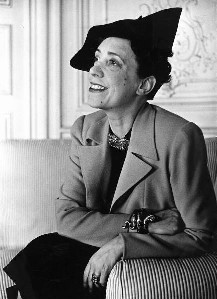



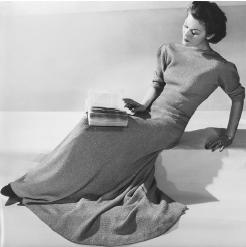














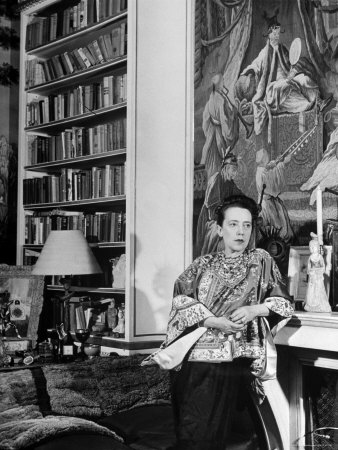









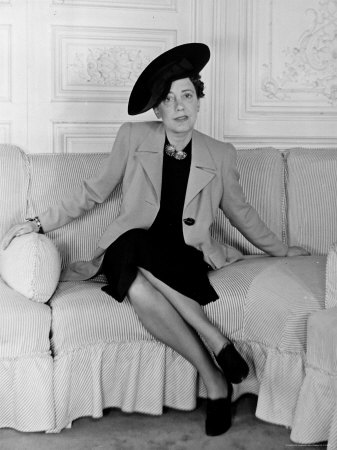
Her home










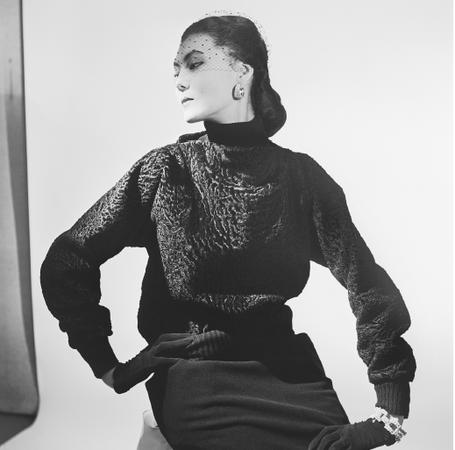
Spectacular Sam! I loved the article of Elsa! She was absolutely amazing, and I so want to congratulate you for this fabulous creation of such a timeless woman in the fashion industry! With the pictures and the information, this blows the socks off of anything Conde Nast could ever do!
ReplyDelete